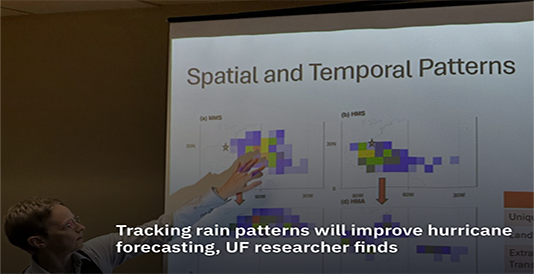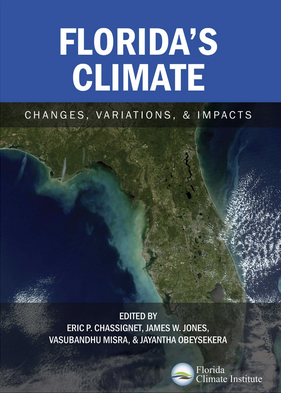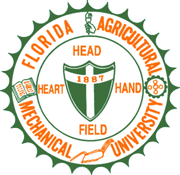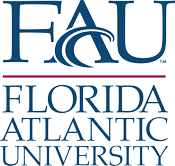Contact Person: This email address is being protected from spambots. You need JavaScript enabled to view it.
Collaborators: K.T. Ingram, G. Kiker, C. Martinez
Institutions: University of Florida
Funding Agency: SERDP
Start: March 2009 End: April 2012
Status: Funded
Filed Under: Coastal Ecosystems, Climate Sciences
Contact Person: Shin, Dong-Wook
Collaborators: Y.Lim, L. Stefanova, SECC
Institutions: Florida State University
Funding Agency: ARC, USDA, Others End: Indefinite
Status: Funded
Filed Under: Agriculture, Climate Sciences
Abstract: Researchers are currently issuing real-time regional forecasts for the Southeast using two approaches: a statistical downscaling model, and a dynamical downscaling model. "Downscaling" means translating a relative coarse-resolution forecast - in this case the FSU/COAPS Global Circulation Model (GCM; horizontal resolution of approximately 200 km) - to a finer-resolution grid over a region of interest (in this case, horizontal resolution of 20 km over the Southeast). The forecasts are issued four times per year. The starting dates and forecast lengths are tailored to the needs of seasonal crop planting planners. There are plans to diversify this set-up in the near future.
Contact Person: Jones, James W.
Collaborators: J. O'Brien, J. Christy, G. Hoogenboom, K. T. Ingram, J.W. Jones, D. Letson, P. Srivastava
Institutions: University of Florida, University of Miami, Florida State University, University of Georgia, University of Alabama- Huntsville, Auburn University
Funding Agency: NOAA/OGP/RISA
Start: July 2010 End: June 2015
Status: Funded
Filed Under: Agriculture, Climate Sciences, Coastal Ecosystems, Extension, Land, Terrestrial Ecosystems, Water
Abstract: Growing from the Florida Consortium, which was founded in 1996, the Southeast Climate Consortium (SECC) mission is to use advances in climate sciences, including improved capabilities to forecast seasonal climate and long-term climate change, to provide scientifically sound information and decision support tools for agricultural ecosystems, forests and other terrestrial ecosystems, and coastal ecosystems of the SE USA. As a multidisciplinary, multi-institutional team, the SECC conducts research and outreach to a broad community of users and forms partnerships with extension and education organizations to ensure that SECC products are relevant, reliable, and delivered to the public by these organizations through their networks and mechanisms. The SECC is adopting a new organization to address the climate information needs of coastal and terrestrial ecosystems in addition to the agricultural ecosystems. Research for the coastal and terrestrial ecosystems will build on the success of the SECC in providing an effective decision support system for agriculture, AgroClimate.org. Research and extension activities will emphasize collaboration among investigators from natural resources sciences, including climate, water resources, land, and energy, and investigators from applications sciences, including extension and outreach, human dimensions, integrated participatory systems analysis.
Our four scientific objectives are:
- Working with boundary organizations, planners, regional data clearinghouses, and other stakeholders, assess the needs of decision makers for climate information, their access to and applications of climate information, and time-scales for needed information
- Based on stakeholder assessments, develop partnerships with appropriate boundary organizations to meet the climate information needs of stakeholders, particularly in coastal and other terrestrial ecosystems
- Provide reliable, timely, probabilistic, and local climate information according to stakeholder needs for adaptation and resilience to climate change and climate variability. Providing this information will require production of downscaled forecasts at the local level and at 1- to 30-year time scales, as well as maintaining and providing historical data and analyses for the region
- Through integrated, multi-disciplinary activities, develop decision support tools and information delivery systems that give decision makers access to climate information that will help decision makers manage risks associated with climate change at various time scales.
Contact Person: Ingram, Keith
Collaborators: N. Breuer, M. Chelai, K.T. Ingram L. Kalin, R. Marcus, D. Nadolnyak, Srivastava, P D. Stooksbury
Institutions: Auburn University, Florida State University, University of Florida, University of Georgia, University of Miami
Funding Agency: NOAA/SARP
Start: August 2009 End: July 2011
Status: Funded
Filed Under: Agriculture, Water
Contact Person: Jones, James W.
Collaborators: G. Baigorria, J. Boote, Clyde Fraisse, K. G. Hoogenboom, K.T. Ingram, J. Paz, C. Roncoli, V. Misra
Institutions: University of Florida, University of Georgia, Florida State University
Funding Agency: Bipartisan Policy Center National Commission on Energy Policy
Start: October 2009 End: September 2010
Status: Funded
Filed Under: Agriculture, Climate Sciences, Extension
Abstract: Farmers are concerned about climate change, how it might affect their systems, and what they should be doing or planning in response to anticipated changes in climate. This project will make use of the IPCC AR4 climate change scenarios, downscaled to the Georgia and North Florida, to assess potential impacts on three major crops grown in these states: cotton, peanut, and corn. We will work with Dr. K. Hayhoe to obtain downscaled realizations of climate change scenarios, ensuring that the most appropriate IPCC models and methods are used. The downscaled climate scenarios will be used to simulate changes in productivity and irrigation requirements for the three crops, and it will include adaptation options that farmers would likely use as climate changes. The DSSAT Cropping System Model will be used to simulate all combinations of climate scenarios, locations, soils, and management options, with and without irrigation, and with and without direct CO2 effects on photosynthesis to evaluate changes in yield and water requirements. This model has been widely tested in Georgia and Florida, and it was recently improved to incorporate the latest knowledge about CO2 responses of the different crops. Prior to the analysis, a summary of prior model evaluations in these states will be prepared to establish its utility for use in the climate change assessments. Simulated yield and irrigation requirements will be analyzed and summarized in maps, tables, graphs, and reports to discuss with stakeholders and to present to the granting agency. Stakeholder meetings will be used to engage them in the analyses and to learn from them what information they need to better prepare for climate change and how much adaptation may cost them, or if it is even possible. The work will build on the considerable experience of the Southeast Climate Consortium (SECC), making use of the tools and methods developed by this program and used for assessment of climate risk in agriculture.
Opportunities
Funding
- Resilience: Vulnerability and resilience management for socio-environmental systems in exposed territories | October 17, 2025 (Pre-Proposals)
- NSF Atmosphere Cluster (AGS-AC) | ongoing
- NSF Geospace Cluster (AGS-GC) | ongoing
- Duke Energy Foundation | Ongoing

















